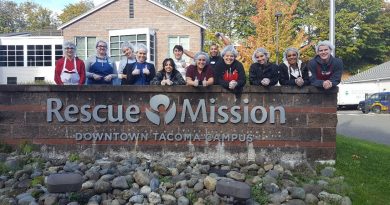Opinion: Community gardens bring environmental care home
There is an increase of concerns over sustainability and environmentally conscious decisions in American culture. We have a need to craft creative solutions to problems that our lifestyles bring to Earth and our local communities.
One solution that should be given more attention and resources is community gardens — collectively owned small gardens that are harvested by and for the community. Community gardens, which are appearing all over the country, are a testament to the power of collective action and care.
The benefits of community gardens are numerous as they shine a light on an exciting future where people can take charge of their own health and bring their neighborhoods together. Community gardens offer a place where a neighborhood can harvest fruits, vegetables and plants that benefit the local ecosystem. These gardens can also improve air and soil quality, increase biodiversity of plants within the area and offer nutritious plant produce to the local community members.
These gardens are especially useful in urban areas where there are historically lower-income populations. The gardens can help mitigate the impact of a food desert — the lack of healthy and accessible food options in a specific region. Gardens do this by making healthy foods more accessible to low-income populations.
Gardens also offer a way for community members to participate in physical activity, spend time outdoors and improve their quality of life. The health benefits alone are enough to convince anyone that community gardens are a great solution to environmental and community injustice.
Community gardens are a way in which neighborhoods can form friendships, social networks and increase positive community membership. These spaces of community gathering also act as an educational tool to bring awareness of the Green Movement to children and urban populations.
The installation of community gardens can help reduce traffic emissions from grocery trips and, over time, create a system in which communities are healthier, more sustainable and more connected with one another. With climate change becoming an increasing pressure on the world and localities, we could look to community gardens as a grassroots effort to create eco-friendlier neighborhoods and educate more citizens about the importance of a healthy environment, healthy food, and the benefits of social gathering and collective action.
Tacoma is a host to many community gardens including the Barangay Tropical Park community garden, Swan Creek Park community garden, Proctor District community garden, Green Thumb community garden, Hilltop Urban Garden and UW Tacoma’s very own Giving Garden.
UWT’s Giving Garden was an initiative by the environmental science program in urban gardening that began in 2009. All produce harvested from the garden is donated to the Good Neighbor Café in Tacoma to provide meals to the homeless and low-income families.
These gardens can be thought of as not only resources throughout Tacoma, but as community efforts to mitigate adverse environmental and health impacts within Tacoma’s broader community. Community gardening is a great way to get one’s foot into the door of sustainable living and create healthier and happier communities across the country.




